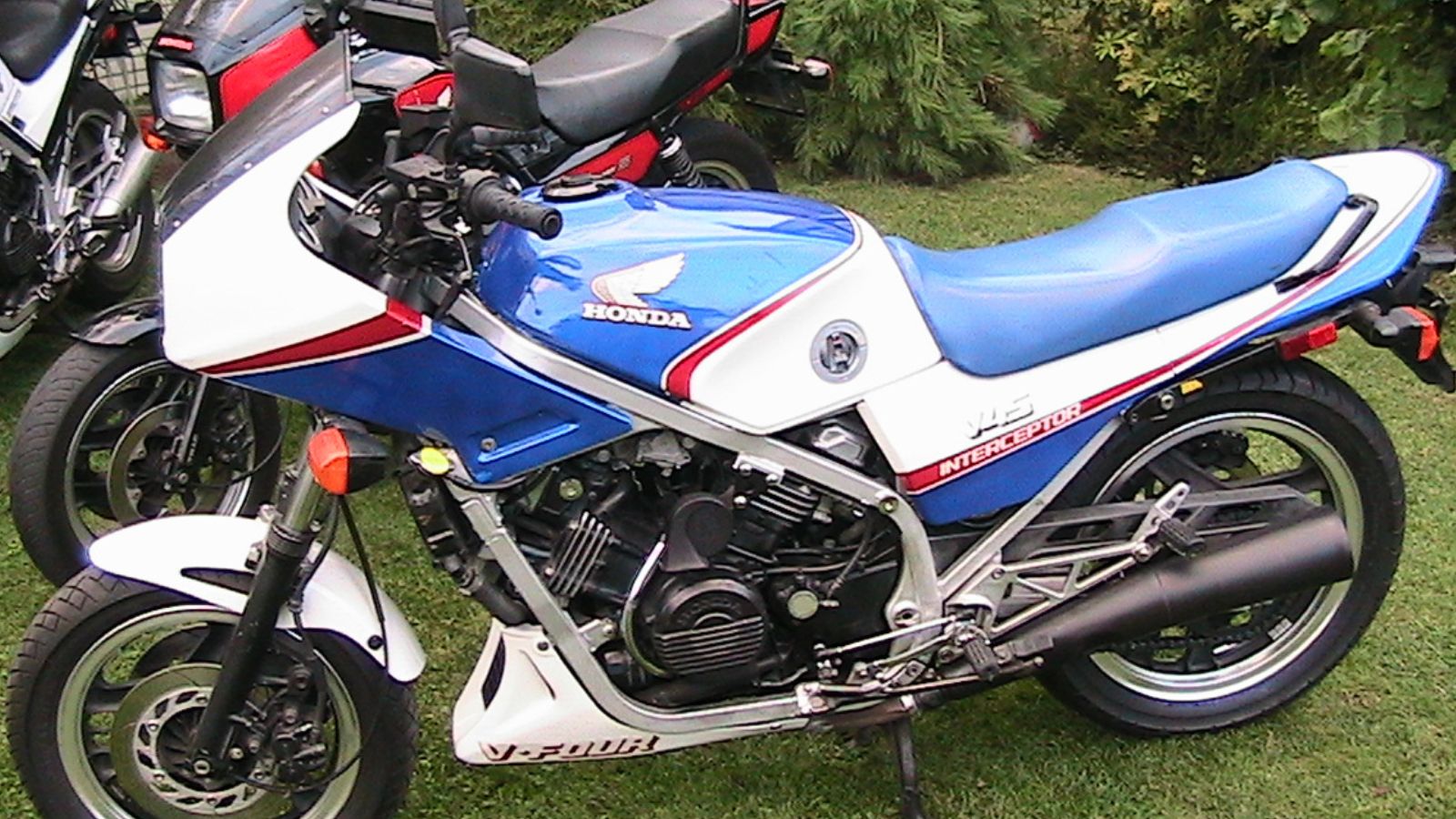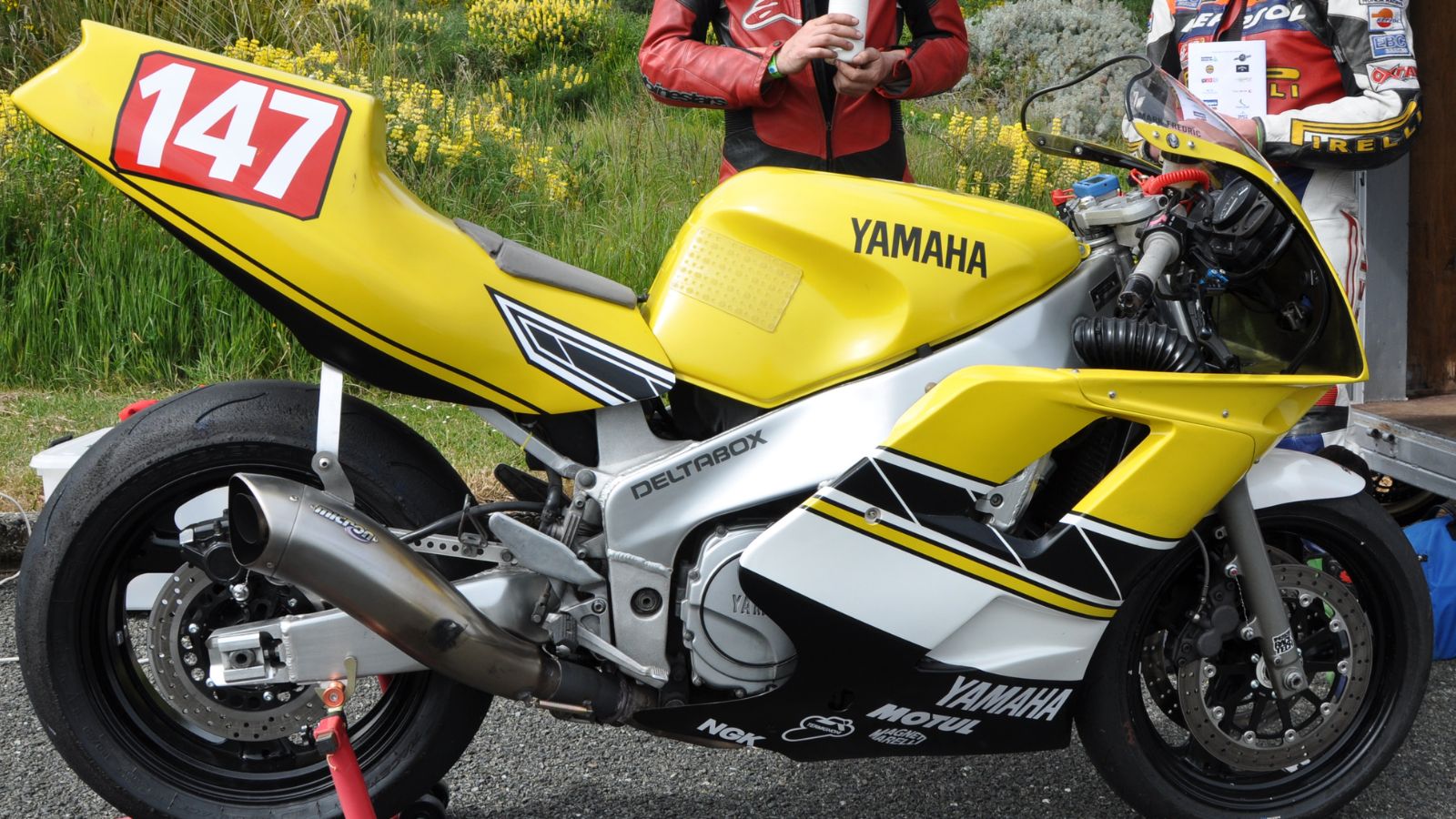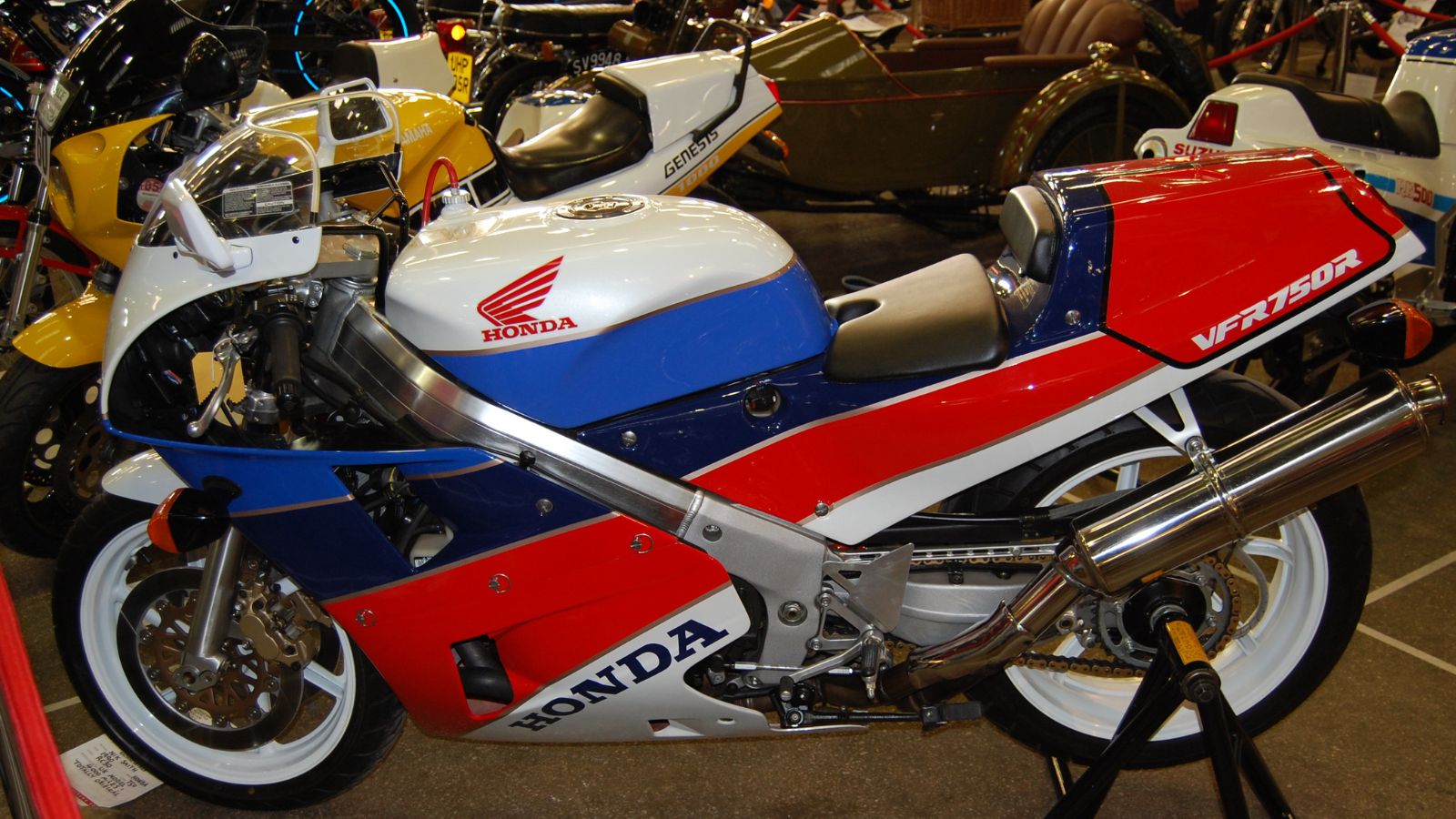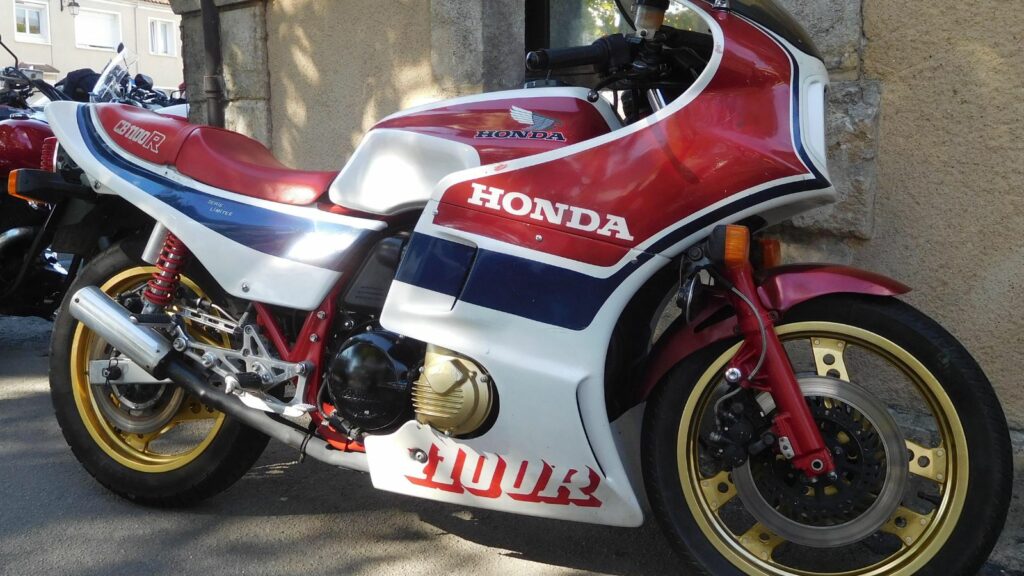The 1980s were a revolutionary decade for motorcycles. Technology was moving faster than ever, competition between manufacturers was fierce, and styling became bold, muscular, and unmistakably of its time. The era gave birth to superbikes that shattered records, cruisers that revived classic design, and sport machines that redefined what performance on two wheels could mean. It was a time when engineers took risks, riders demanded more, and the industry responded with innovation that still shapes the motorcycle world today. Here are some of the best and most influential bikes that defined the decade of excess, speed, and character.
Honda VF750F Interceptor

When Honda introduced the VF750F Interceptor in 1983, it changed the face of sport motorcycling. This was the first real attempt at blending race engineering with street usability, and it worked brilliantly. Its V4 engine was advanced for its time, producing a wide, smooth powerband and a distinctive growl that riders still remember today. The bike handled beautifully, thanks to its stiff frame and advanced suspension, giving riders the confidence to push harder than ever before.
The Interceptor’s angular fairings and racing-inspired look also made it one of the most striking bikes on the road. It was not only fast but reliable, and it set the stage for Honda’s dominance in both performance and technology throughout the 1980s. The VF750F was more than just a sportbike; it was a declaration that Honda could outthink and outperform the world’s best.
Kawasaki GPz900R Ninja

In 1984, Kawasaki unleashed the GPz900R, the first motorcycle to wear the now legendary Ninja name. This was a bike that changed the game. It was the first production motorcycle to break 150 miles per hour, thanks to a liquid-cooled inline four engine that produced an incredible 115 horsepower. It was sleek, aerodynamic, and unlike anything the public had seen before.
The GPz900R was more than just fast. It was also surprisingly refined, with excellent balance and comfort that made it suitable for real-world riding. It gained worldwide fame when Tom Cruise rode one in the film Top Gun, instantly becoming a cultural icon. The Ninja set a new benchmark for performance motorcycles and introduced the world to the concept of the modern superbike.
Suzuki GSX-R750

In 1985, Suzuki dropped a bombshell on the motorcycle world with the GSX-R750. This was not just another fast bike, it was a race bike for the street. It weighed less than 400 pounds, thanks to its aluminum frame and lightweight components, and it was powered by a potent oil-cooled engine that delivered thrilling acceleration. Every element of the GSX-R750 was built for performance, from its aerodynamic fairing to its precise handling.
What made the GSX-R truly groundbreaking was its focus on weight reduction and aerodynamics. It was raw, responsive, and brutally fast, yet light enough to dance through corners with grace. Riders loved it for its purity of purpose. The GSX-R750 redefined what a sportbike could be and created a legacy that still shapes the superbike category today.
Honda CB1100R

Between 1980 and 1983, Honda built one of the most exclusive and desirable motorcycles of its time, the CB1100R. This was not a mass-market bike. It was hand-built in limited numbers for homologation, meaning it was essentially a road-legal race bike. Its air-cooled inline four produced around 120 horsepower, and it came wrapped in sleek aerodynamic bodywork that made it look like it belonged on a racetrack.
The CB1100R was stable at high speed, beautifully engineered, and astonishingly fast for its day. Every component was designed with precision, from its lightweight fairing to its high-quality suspension and brakes. It was a statement from Honda that they could build the ultimate superbike, and for many collectors, it remains one of the crown jewels of 1980s performance.
Ducati 851

In 1987, Ducati entered a new era with the release of the 851. It represented the birth of Ducati’s modern superbike dynasty. This machine introduced key technologies that would define the brand for decades, including liquid cooling, fuel injection, and the now iconic Desmodromic V-twin engine in its most advanced form.
The Ducati 851 was not the most powerful bike of its time, but its balance and precision were unmatched. It was designed for handling, and its trellis frame gave it incredible stability and feedback. On the racetrack, it dominated, laying the groundwork for Ducati’s World Superbike success in the 1990s. It also marked the beginning of the brand’s reputation for blending exotic design with cutting-edge engineering.
Harley-Davidson FXST Softail

Harley-Davidson had struggled through the 1970s, but the 1980s brought a rebirth, and the FXST Softail, introduced in 1984, was the bike that led the charge. It looked like a vintage hardtail chopper from the 1950s, but it secretly used a modern rear suspension system that delivered real comfort. This clever design combined old-school style with modern rideability, and it helped Harley reconnect with its core audience.
The Softail’s V-twin engine, deep chrome, and low-slung stance gave it an unmistakable American character. It captured the freedom and spirit of the open road, becoming one of Harley’s best-selling and most influential models. It also sparked an explosion of custom motorcycle culture, as riders used the Softail as the foundation for countless personalized creations.
Yamaha FZR1000

The Yamaha FZR1000, launched in 1987, was the ultimate expression of Japanese engineering at the time. With a 989cc engine producing around 140 horsepower, it was one of the fastest and most refined bikes on the road. But it was not just about brute power. The FZR introduced Yamaha’s innovative EXUP valve system, which adjusted exhaust flow for better torque at all rev ranges. This made the bike smooth and flexible while maintaining thrilling performance at high speed.
The FZR1000’s chassis was incredibly stable, and its aerodynamic design made it both fast and comfortable. It was often described as the first bike that truly bridged the gap between superbike performance and everyday usability. Many riders still regard it as one of the greatest sportbikes of the 1980s and a machine that defined Yamaha’s engineering excellence.
BMW K100RS

BMW took a major step into the future with the K100RS in 1983. The German brand broke away from its traditional boxer engine design and introduced a new liquid-cooled inline four engine that lay flat on its side, giving the bike a low center of gravity. This unique configuration earned it the nickname “the flying brick.”
The K100RS was a high-speed touring bike that combined comfort, reliability, and performance. It was one of the first production motorcycles to feature electronic fuel injection, and its aerodynamic fairing gave it a sleek, futuristic look. Riders loved its smoothness and ability to cover huge distances with ease. It redefined the idea of a sport tourer and helped modernize BMW’s image worldwide.
Kawasaki KLR650

For riders who dreamed of adventure, the 1987 Kawasaki KLR650 was the ultimate companion. It offered the perfect mix of off-road capability and on-road comfort, making it one of the first truly versatile dual-purpose motorcycles. Its 652cc single-cylinder engine was simple, durable, and could handle anything from city streets to desert trails.
The KLR650’s tall stance, long-travel suspension, and comfortable ergonomics made it perfect for exploration. It became a favorite among travelers and adventure riders, many of whom took it across continents. The design was so good that it barely changed for over 30 years, proving how far ahead of its time it really was.
A Decade of Icons

The 1980s will always be remembered as one of the most exciting and influential decades in motorcycle history. It was a time when manufacturers took bold risks and delivered machines that balanced power, innovation, and personality in ways the world had never seen before.
These bikes were not just vehicles; they were statements of freedom, creativity, and technological progress. From the cutting-edge engineering of the GSX-R750 to the brute power of the VMAX and the enduring versatility of the KLR650, each of these motorcycles left a mark that still resonates today.
For many riders, the bikes of the 1980s represented the purest form of motorcycling — fast, mechanical, and full of soul. They were machines built for people who wanted to feel the road, not just ride on it. And decades later, their legacy still rides strong in the hearts of enthusiasts around the world.
25 Facts About Car Loans That Most Drivers Don’t Realize

Car loans are one of the most common ways people fund car purchases. Like any other kind of loan, car loans can have certain features that can be regarded as an advantage or a disadvantage to the borrower. Understanding all essential facts about car loans and how they work to ensure that you get the best deal for your financial situation is essential. Here are 25 shocking facts about car loans that most drivers don’t realize:
25 Facts About Car Loans That Most Drivers Don’t Realize
